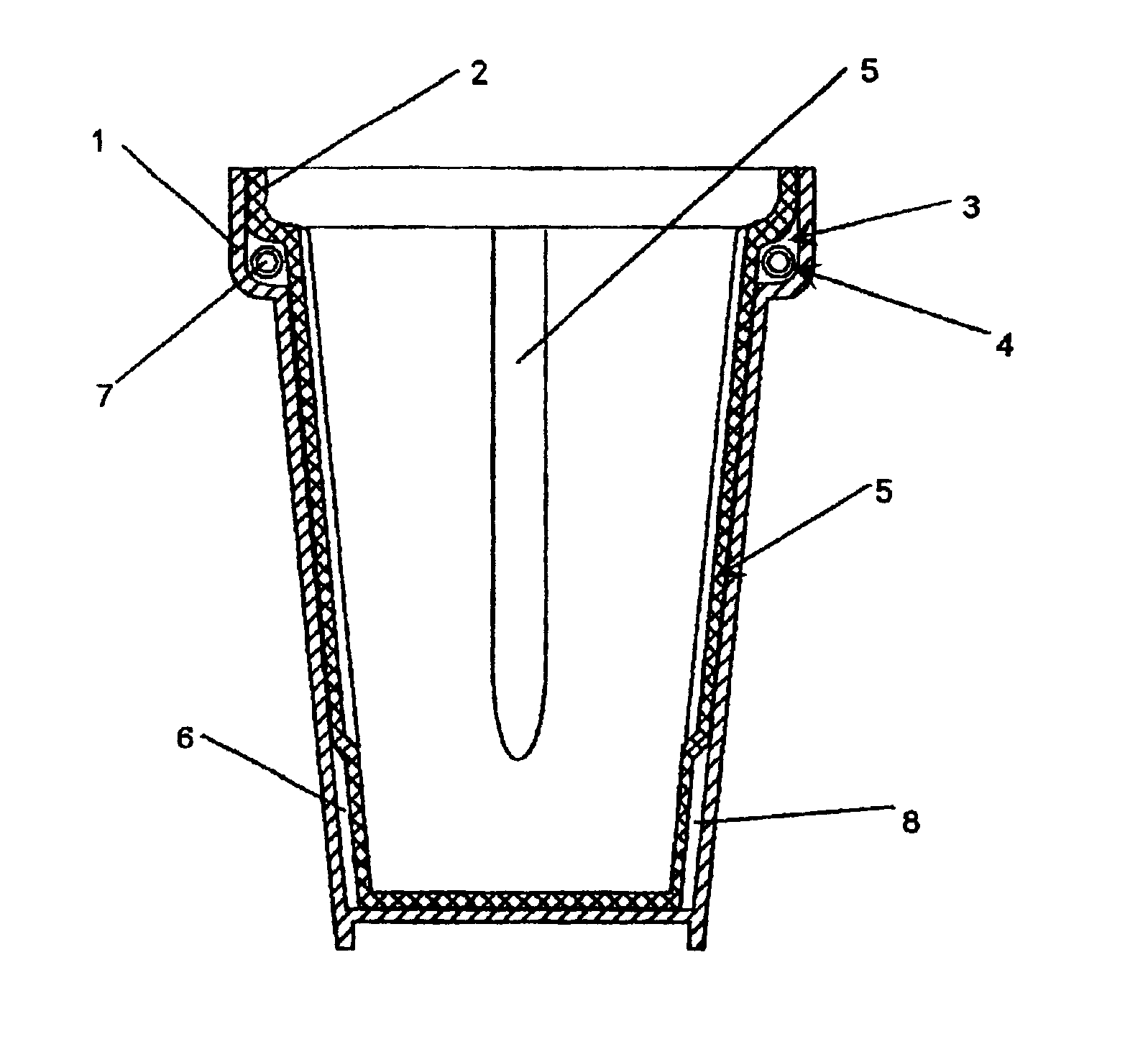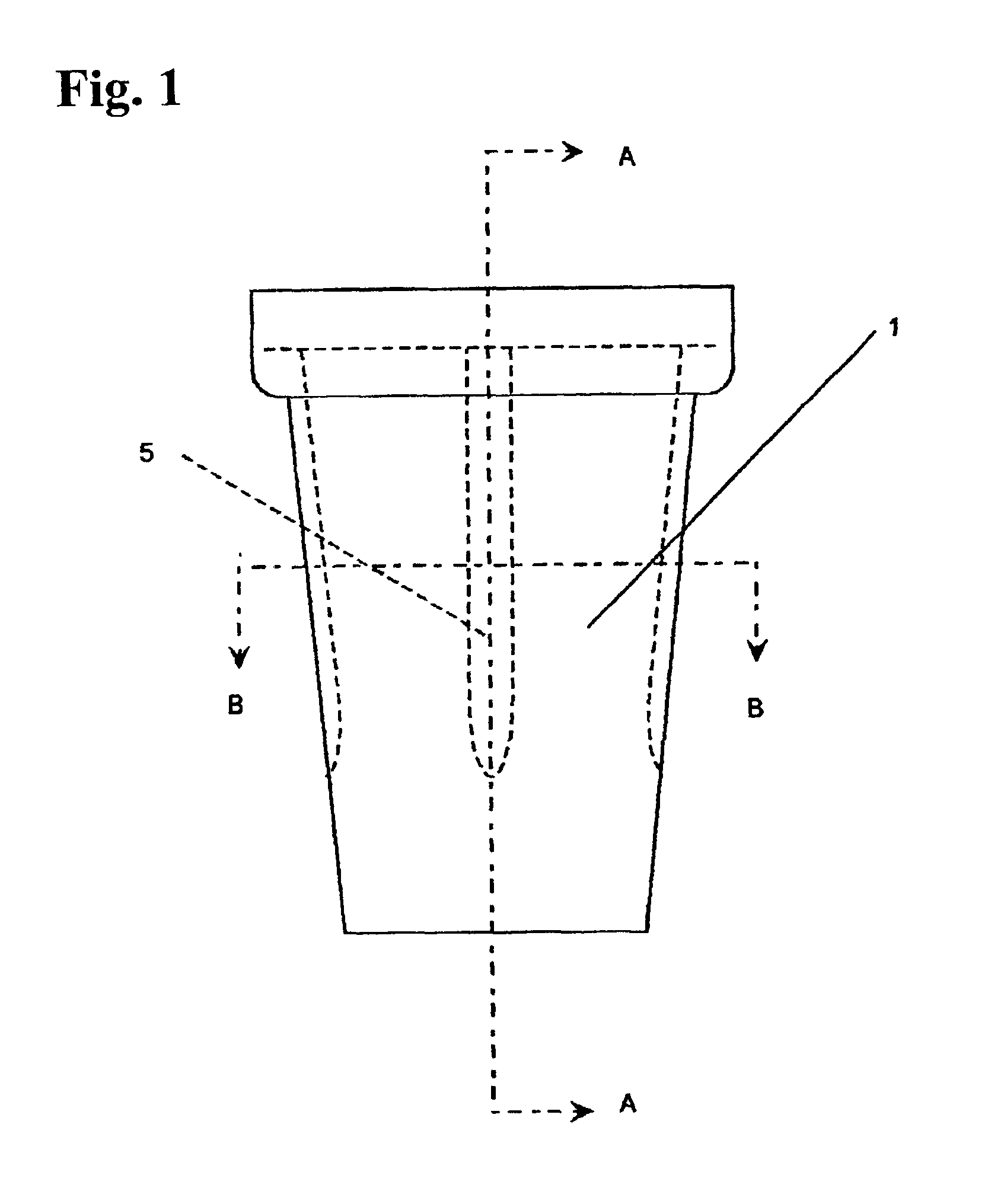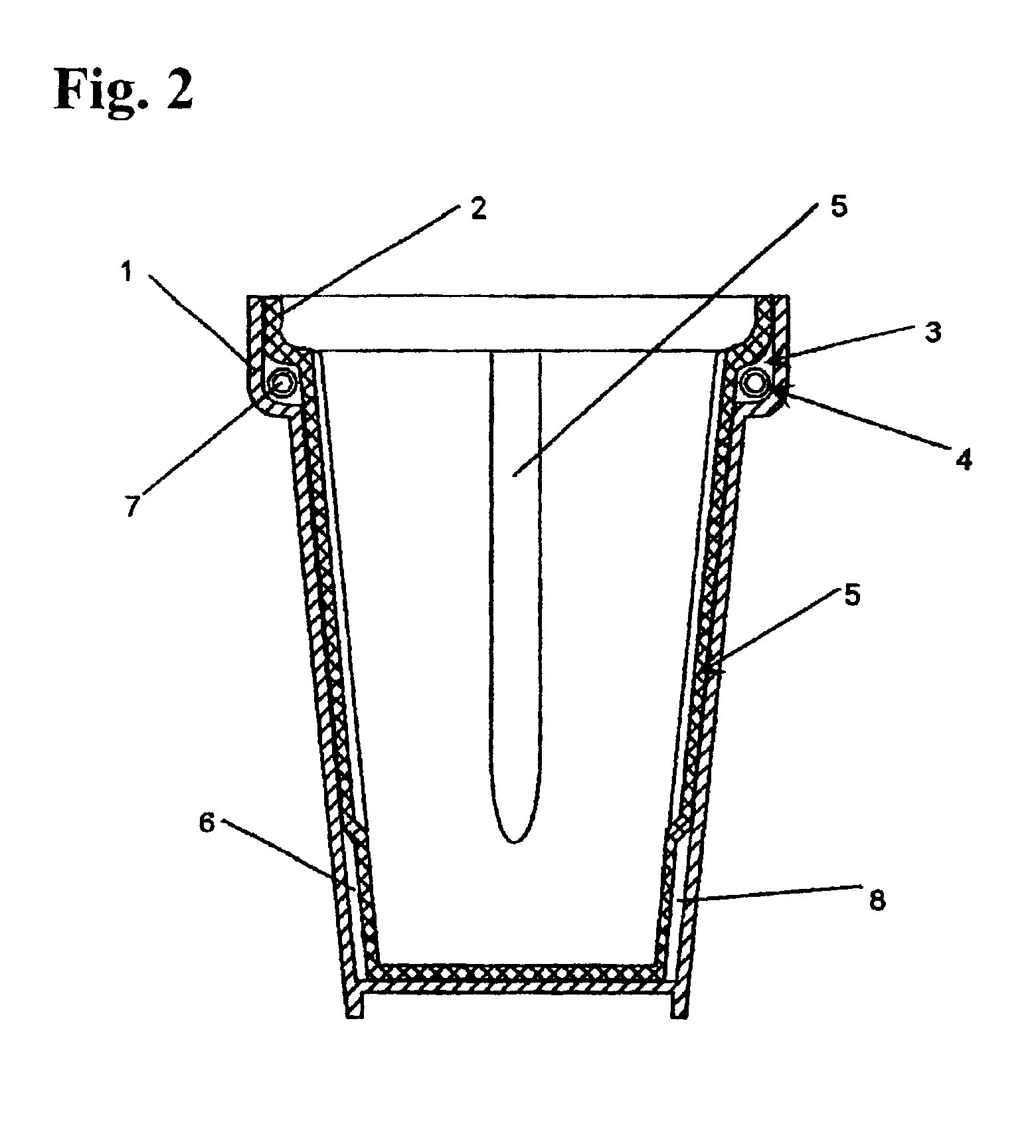Luminous container
a technology of luminous containers and containers, which is applied in the field of luminous containers, can solve the problems of difficult to achieve the optimal ratio of liquid agents for chemiluminescence, difficult to break capsules by external force or manual operation, and inability to have a large diameter of capsules, etc., to achieve the effect of enhancing portability, reducing storage space requirements, and maintaining the volume of chambers
- Summary
- Abstract
- Description
- Claims
- Application Information
AI Technical Summary
Benefits of technology
Problems solved by technology
Method used
Image
Examples
Embodiment Construction
[0031]Various embodiments of the present invention will now be described with reference to the drawings.
[0032]FIGS. 1 to 3 show a cup as a container according to a first embodiment of the present invention. The cup comprises a housing including an opening, and a wall defining the opening and a storage space contiguous with the opening. The wall includes a cup-shaped outer case 1 as an outer wall segment. As best shown in FIG. 2, the outer case 1 has a relatively larger opening of 80 mm in diameter, and includes a vertical flange portion surrounding the opening and having a height of 18 mm.
[0033]The wall further includes an inner case 2, having a shape similar to the outer case, as an inner wall segment. The inner case 2 has a vertical flange portion surrounding its opening as the opening of the housing. The vertical flange has a height of 10 mm, less than that of the flange portion of the outer case, to provide a first doughnut-shaped chamber 3 in parallel with or around the periphe...
PUM
 Login to View More
Login to View More Abstract
Description
Claims
Application Information
 Login to View More
Login to View More - R&D
- Intellectual Property
- Life Sciences
- Materials
- Tech Scout
- Unparalleled Data Quality
- Higher Quality Content
- 60% Fewer Hallucinations
Browse by: Latest US Patents, China's latest patents, Technical Efficacy Thesaurus, Application Domain, Technology Topic, Popular Technical Reports.
© 2025 PatSnap. All rights reserved.Legal|Privacy policy|Modern Slavery Act Transparency Statement|Sitemap|About US| Contact US: help@patsnap.com



